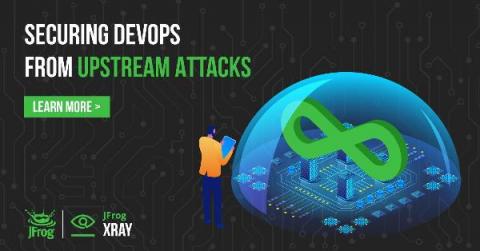Operations | Monitoring | ITSM | DevOps | Cloud
CI CD
The latest News and Information on Continuous Integration and Development, and related technologies.
New Elastigroup features for Jenkins plugin give users more control of their CI/CD pipelines
Continuous integration and deployment (CI/CD) processes are becoming the standard for many organizations operating in the cloud—including many Spot by NetApp customers—with Jenkins as a core tool for building, testing and deploying code through CI/CD pipelines. Spot has had an integration with Jenkins since our early days, allowing our users to configure Elastigroups managed by Jenkins and deploy jobs running on spot instances.
Looking Back at 2020 and How We Remained True to Our Mission to Make Building Software Easier Despite The Pandemic
The last year was undeniably a different year for everybody. At the start of 2020, Coronavirus spread all over the world, resulting in a global pandemic. Covid affected the way we live, work, meet other people, and has drastically changed everyone’s lives in ways that we could not ever imagine. In a world of uncertainty, DevOps has undeniably become even more important.
Track Datadog metrics in Sleuth
Data from monitoring tools like Datadog are useful for developers to help them understand whether the code they've deployed is healthy or needs to be fixed or rolled back, or when there is an incident to investigate. As a deployment mission control, Sleuth helps developers see metrics data from a developer-centric point of view - by deployment - and interpret such data for them.
SDLC Security: It's Personal for JFrog
Using Helm to Deploy a Kubernetes Application to Multiple Environments (QA/Stage/Prod)
One of the most typical challenges when deploying a complex application is the handling of different deployment environments during the software lifecycle. The most typical setup is the trilogy of QA/Staging/Production environments. An application developer needs an easy way to deploy to the different environments and also to understand what version is deployed where. Specifically for Kubernetes deployments, the Helm package manager is a great solution for handling environment configuration.
Generate Code Coverage Reports using Coveralls and Codefresh
Coveralls is a web service that allows users to track the code coverage of their application over time in order to optimize the effectiveness of their unit tests. Once you are managing your application and associated resources within a CI/CD platform like Codefresh, you want to receive insights on the test coverage automatically with every pipeline build. This post provides an overview of how this can be achieved with Coveralls and Codefresh.
Install JFrog Platform on Kubernetes in Under 20 Minutes
Where is Your Next Release Bottleneck?
A typical modern DevOps pipeline includes eight major stages, and unfortunately, a release bottleneck can appear at any point: These may slow down productivity and limit a company’s ability to progress. This could damage their reputation, especially if a bug fix needs to be immediately deployed into production. This article will cover three key ways using data gathered from your DevOps pipeline can help you find and alleviate bottlenecks in your DevOps pipeline.











